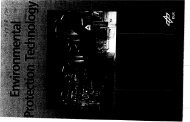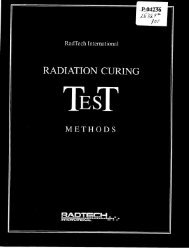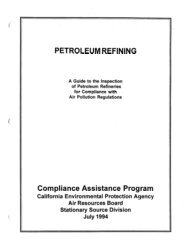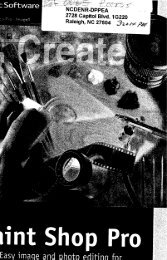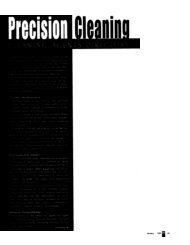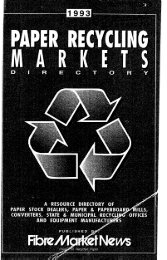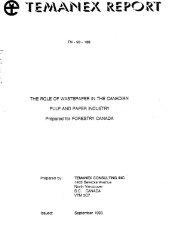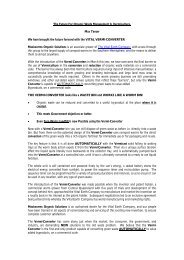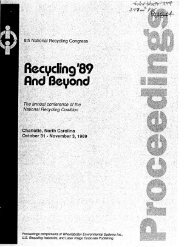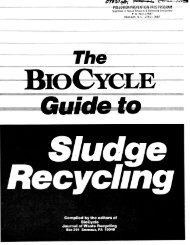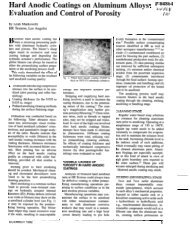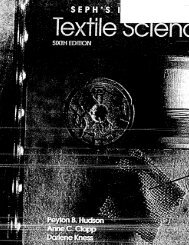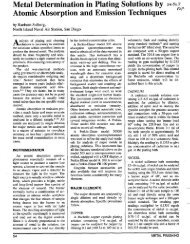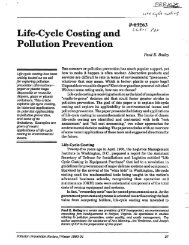Electronic Parts/Guidelines - infoHouse
Electronic Parts/Guidelines - infoHouse
Electronic Parts/Guidelines - infoHouse
Create successful ePaper yourself
Turn your PDF publications into a flip-book with our unique Google optimized e-Paper software.
electrical conductive material (e.g., non-<br />
ferrous metal) from nonconductive material<br />
(e.g.. organics). (1)<br />
ELECTRONICOPTICAL SORTER<br />
separates glass from stones and pieces of<br />
ceramics: sorts the glass according to<br />
color. Photoelectric detector determines<br />
the color or opacity of the material and<br />
blasts of air deflect the pieces into the<br />
proper containers. (1)<br />
ELECTROSTATIC PRECIPITATOR<br />
device for removing particulate matter from<br />
MWC facility air emissions. It works by<br />
causing the particles to become<br />
electrostatically charged and then<br />
attracting them to an oppositely charged<br />
plate, where they are precipitated out of<br />
the air. (7)<br />
ELECTROSTATIC SEPARATOR<br />
a device utilizing the principle that electrical<br />
conductors lose an induced static<br />
charge faster than insulators. In this way,<br />
an electrostatic sorter can separate conducting<br />
materials (e.g., aluminum) from<br />
non-conducting ones (e.g.. glass) afler the<br />
particles are charged in a high voltage<br />
direct current electrical field. (I)<br />
ELUlRlATlON<br />
a process wherein materials are separated<br />
according to differences in their densities<br />
andlor shapes in a counter- current stream<br />
of a fluid, usually water, gas or air. (1)<br />
EMISSION STANDARD<br />
a rule or measurement established to regulate<br />
or control the amount of a given constituent<br />
that may be discharged into the<br />
outdoor atmosphere. (I)<br />
EMISSION<br />
1. Discharge of a gas into atmospheric circulation<br />
(7). 2. Material released into the<br />
air either by a discrete source (primary<br />
emission) or as a result of a photochemical<br />
reaction or chain of reactions (secondary<br />
~- emissinn)--The.total of substances<br />
exhausted into the atmosphere. (I)<br />
EMULSION<br />
a liquid that is a mixture of liquids that do<br />
not dissolve in each other. in an emulsion,<br />
one of the liquids contains minute droplets<br />
of the other, which are evenly distributed<br />
throughout.<br />
END PRODUCT<br />
any finished item which is not modified<br />
prior to serving its intended end use. (5)<br />
END-PRODUCT MANUFACTURER<br />
produces from recycled material either a<br />
finished product or a component for a finished<br />
product.<br />
ENERGY RECOVERY PROCESSES<br />
I. Processes that recover the energy<br />
content of combustible wastes directly by<br />
burning, or indirectly by being converted to<br />
another fuel form such as gas or oil (1). 2.<br />
Conversion of waste energy. generally<br />
through the combustion of processed or<br />
raw refuse to produce steam. See also<br />
Incineration (7).<br />
ENERGY RECOVERY<br />
energy resource recovery where a part, or<br />
all, of the waste stream is processed to<br />
utilize its heat content to produce hot air,<br />
hot water, steam, electricity, synthetic fuel<br />
or other useful energy forms. (1)<br />
ENTERPRISE FUND<br />
a fund for a specific purpose that is selfsupporting<br />
from the revenue it generates.<br />
(7)<br />
ENVIRONMENT<br />
the conditions, circumstances, and influ-<br />
ences SUrrOUnding and affecting the devet-<br />
opment of an organism(s). (I)<br />
ENVIRONMENTALLY RESPONSleLE<br />
the conscious act of choosing options<br />
which do not have a negative impact on<br />
the environment.<br />
ENVIRONMENTAL SYSTEM<br />
the interaction of an organism or group of<br />
organisms with its natural and manmade<br />
surroundings. (1)<br />
EPA United States Environmental Protection<br />
Agency<br />
EXTRACTION<br />
the separation of specific constituents from<br />
a matrix of solids or a solution, employing<br />
mechanical andlor chemical methods. Also<br />
see recovery (t)<br />
EXTRANEOUS ASH<br />
after combustion, that portion of the<br />
residue (ash 8, non-combustible) which is<br />
derived from entrained materials which<br />
Appendlx 8. Glossary of Terms 8'1



